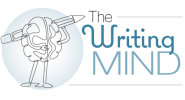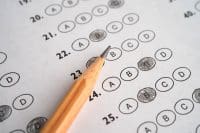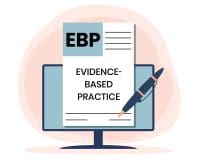Beginning authors may not realize that before submitting a manuscript, it’s a good idea to send a query—an email to the editor of a journal to see if they’re interested in the topic. Here are answers to some of the questions I get asked about queries. (Keep in mind that not all editors accept queries; check the journal’s author guidelines.)
Why query?
A query saves you time. Your manuscript should match the editorial tone and requirements of the journal you have targeted. An article for American Nurse Journal, for example, will differ from an article in an academic journal, even when the topic is the same. Once you know the editor is interested in your article, you can craft your article so it fits the journal.
A query also gives the editor an opportunity to provide feedback on your idea that can help you tweak it so it best fits with the journal’s needs and audience. New (and experienced!) authors frequently try to cover too much territory in a single article. For instance, it’s unlikely you could discuss signs and symptoms, diagnosis, treatment, nursing care, and complications related to acute myocardial infarction (MI) in one article for American Nurse Journal, given the typical length of our feature articles. However, you could, as one author did, focus on MI complications.
An editor’s interest in your idea does NOT ensure publication. The manuscript will still need to go through the peer review process. However, you certainly have a better chance when you start by writing about something the editor is interested in publishing for the journal’s readers.
What goes into a query?
A query contains the name of the editor and journal, a short description of the topic, a brief statement as to why you’re qualified to write the article, and if possible, when you could submit the article.
Editor/journal name. Be sure these are correct. I know it seems obvious, but I (and my editor colleagues) commonly receive queries with our names misspelled, and, even worse, with the wrong journal name. If you get these basics wrong, I’m not going to have confidence that you’ll provide me with an accurate article.
Topic description. Briefly state what your topic is and what the article would cover. A short paragraph should do it. Most importantly, explain why you think the readers of the journal would benefit from the article.
Your qualifications. This isn’t meant to be a recitation of your resume, but rather a note about your expertise in the subject matter. For example, maybe you have been a critical care nurse in the neuro ICU for 10 years and you want to write about a neurological assessment. If you’ve had articles published, by all means mention it, but it’s OK if you haven’t published before.
Timing. It’s helpful to know when you could submit the article. To me, seeing a date makes me feel like the author is serious about the project. However, not having a date is fine too; it’s unlikely to affect whether the editor accepts your idea.
Other considerations:
- Clearly state in the subject line of the email that you’re sending a query. For example:
Query for American Nurse Journal: Article on caring for patients with chronic pain who have acute pain
- Include your full name, credentials, title, and contact information at the end of the email. Even though it’s an email, you should consider it professional correspondence.
What are common mistakes made in queries?
I’ve mentioned some, but will add three important ones:
- Telling the editor that you got an “A” on your school paper or that your instructor said it should be published. That is typically a red flag for editors because writing an article for a journal is typically quite different than writing a school paper. Too often authors don’t recognize that fact and submit something that doesn’t work for the journal’s readers.
If you decide to mention that you wrote about this topic for school, be sure to clearly state that you would adapt your article to fit the needs of the journal.
- Sending a query that doesn’t relate to the journal’s readership. For example, American Nurse Journal publishes articles that focus on clinical practice, so a query about publishing a research study isn’t going to gain any traction. However, you can think about providing information related to what you found in your research. For instance, perhaps your study identified best strategies for addressing patients who are nonadherent with their psychiatric medications. You can present the strategies, just not in the format of a study.
- Grammatical and spelling errors. These make me wonder about the author’s attention to detail, which, in turn, makes me wonder about the quality of the manuscript I would receive.
Can I submit my idea to two or more journals at the same time?
Editors differ on this. It’s not a good feeling to respond to a query only to be told that the author is planning to submit to another journal, so I prefer the query-one-journal-at-a-time approach. But it’s accepted practice to query multiple journals. Just remember that you should not submit a manuscript to more than one journal at the same time.
How long before I receive a response to a query?
Some editors respond to query emails within one week, often sooner. Others do not. Keep in mind, however, that there is wide variation in these estimates. (I try to respond within 24 to 72 hours.)
As a general rule, you can resend your email in a week if you haven’t received a response. (Note: Not all editors respond to queries they aren’t interested in.)
A query doesn’t take much of your time to create, but it can save you time in the long run!
For more information, see Anatomy of Writing for Publication for Nurses, 3rd ed.



















